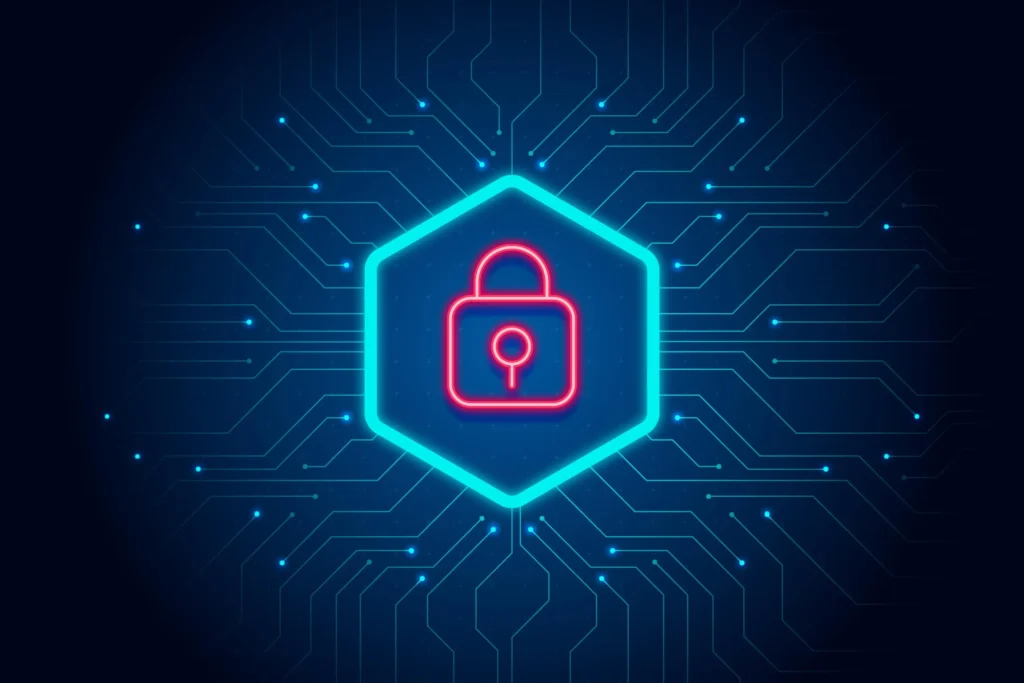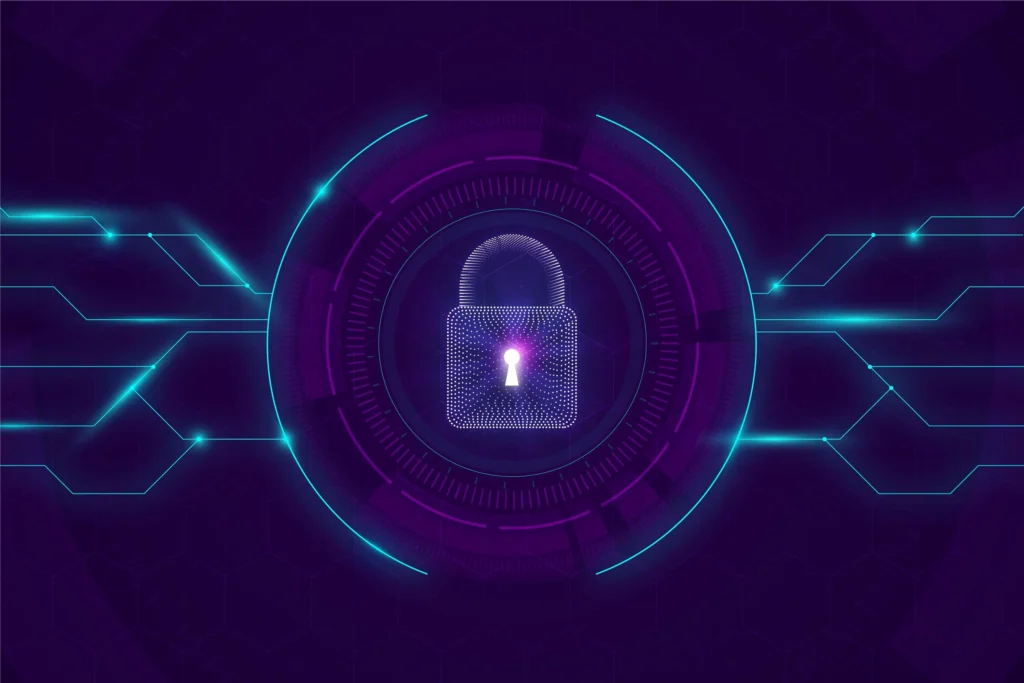Introduction

In the increasing globalization and fast paced era in the face of technology, the awareness of securing ones digital assets is very rife today more than ever. There are new technologies that keep evolving on a daily basis and with it, new threats to our information and privacy. In the paper, the pertinent issues may be discussed about cyber security, importance, risks and which ways businesses and people can ensure themselves against these threats.
What is Cyber Security?
Cyber security denotes the techniques and controls designed to protect networks, devices and data from unauthorized access, modification and destruction. It is very elaborate in that it also takes care of the security of all the digital systems ensuring securing of a personal data, or rather an organization’s or a company’s data from any forms of cyber security threats.
At a point where data breaches could result in both financial and nonfinancial repercussions, with advantages in the debts of cyber-security seemed inevitable, comprehending cyber security operations and mechanisms becomes crucial. Regardless of the size of the enterprise, these attitudes should be institutionalised to enhance respect of customers and clients to any business.
Key Components of Cyber Security
Computer Security
Computer security forms the first line of defense against threats that may affect computers, individual systems, or an organization of computers. It is a form of protective action oriented towards contamination of computers and other cyber attacks. This includes using antivirus software, firewalls, and performing updates and patches on the systems to remove possible loopholes.
Information Security
In this context, information security is the centerpiece of computer security, a smidgen focusing on the responsibility of safety of one or the other type of information – cyberspace, paper, etc. Wherever the electronic evidence resides it is important that its confidentiality, integrity, and availability is assured. This involves policies for and technical measures for ensuring appropriate use of data like implementing restrictions on data access by users, encrypting data, etc.
Basic Components Network Security

Types of Cyber Threats
Cyber threats, regardless of the protective technology in place, still thrive. There is a need to comprehend these risks for the management of risk.
Malware: Malware is a type of software which is created for the purpose of infecting, destroying or authorized control of any computer system. Some systems, viruses, worms, and Trojans can install and run malicious programs, steal information and introduce back doors that can be abused later.
Phishing: Phishing entails intending to acquire information such as usernames and passwords or even credit card details by posing as a legitimate organization. They usually take the form of emails or texts appearing to be from trustworthy sources.
Ransomware: Ransomware is a certain malicious software, which denies access to a user’s information, until ransom is paid for by the user. Such have contributed to why several businesses have become bankrupt as they few or no institutional resources left.
Insider Threats: Insider threats are threats that penetrate from within an organization by employees or competent individuals within the organization who may be contracted and can harm information security either out of purpose or ignorance. This calls for more need on effective access restrictions and enhanced risk awareness to every employee.
The Role of Cyber Security Companies
With the complexity and frequency of cyber threats, many organizations turn to specialized cyber security companies for expertise and support. These firms offer a wide range of services, including:
- Risk Assessment: Evaluating an organization’s current security posture and identifying vulnerabilities.
- Incident Response: Providing immediate support in the event of a cyber attack, including containment and recovery.
- Security Training: Educating employees on best practices and emerging threats to foster a culture of security awareness.
Partnering with reputable cyber security companies can help organizations navigate the complexities of modern threats and implement effective strategies to safeguard their assets.
Best Practices for Enhancing Cyber Security

Due to the increasing level of sophistication and occurrence of cyber threats, a number of institutions apply specialized cyber security companies. These companies have several services to offer, such as.
- Risk Assessment: Assessing the level of security of an organization and its weak points in capacity.
- Incident Response: Offering intervention at the time of a cyber attack with a response team to help hinter the attack and assist in restoration.
- Security Training: Training personnel on how to respond to various threats in a workplace and promote security consciousness.
The collaboration with these cyber security firms can enable organizations to understand how best to deal with some of these threats and avoid loss of their resources.
Best Strategies to Improve Cyber Security
In order to prepare for any possible risks, there should be by both individuals and organizations practices which are still effective against certain threats.
It is Important to Correct Software to the Majority of New Updates
Software applications and their underlying operating systems should regularly be upgraded. Attackers usually target applications with outdated software versions. Routine updates enable a company to eliminate such shortcomings which form a defense gap against the attackers.
Appropriate Password Management
Encouraging the use of strong, new passwords on all available accounts as the general practice of account holders should not be underestimated. Multi-factor Authentication (MFA)The Future of Cyber Security. As technology advances, so too do the tactics used by cybercriminals. The future of cyber security will likely involve increased reliance on artificial intelligence (AI) and machine learning to detect and respond to threats in real time.
Organizations must remain agile, continually adapting their security strategies to counter emerging threats. The integration of new technologies and proactive risk management will be critical in ensuring long-term security.
Conclusion

In today’s age of advanced technologies and the rise of the world wide web, it appears that user’s security cannot be emphasized enough. It is possible to lessen the risk of constant cyber threats among even those individuals delving into the technologies for the very first time if it will make such efforts.
Frequently Asked Questions
The term cybersecurity can therefore be defined as measures, techniques, tools and methodologies that are aimed at protecting computers, networks, programs and data from illicit access, distortion or attack. It concerns a broad spectrum of security courses that protect personal data from cyber risks like virus, phishing, ransomware, and data violations. As the control of information transforms to digital, it becomes critical for persons, companies, and government to protect their information.
The role of cybersecurity is to protect digital information and infrastructure from threats. This includes implementing security measures such as firewalls, intrusion detection systems, encryption, and regular security audits. Cybersecurity also involves educating users about safe online practices and creating incident response plans to quickly address breaches when they occur. By minimizing risks and responding effectively to incidents, cybersecurity helps ensure the continuity of operations and protects sensitive data.
Cybersecurity performs several critical functions, including:
- Risk Assessment: Discovering critical risks of systems and processes.
- Protection: The physical security measures to protect the company’s networks and data.
- Detection: Systems for tracking of suspicious activities or security breaches.
- Response: Formulating strategies to contain harm from occurrences.
- Recovery: Automating process of recovering systems and data after an incident has occurred. In general, cybersecurity is used to ensure that the data and systems can run in a safe manner.
Cybersecurity is essential for a wide range of entities, including:
- Businesses: For secure storage and proper utilization of customers sensitive information and organizational secrets.
- Government Agencies: For the purpose of protecting National security information and the data of its citizens.
- Healthcare Organizations: In order to keep the information contained in a patient’s record confidential and protected from tampering.
- Educational Institutions: To ensure that students’ and faculty’s information and knowledge is safe.
- Individuals: For protection of ones data and interaction from malicious attacks.
In today’s globally connected society, almost everyone has to take advantage of cybersecurity to safeguard their valuable property.
Cybersecurity is mainly focused at guarding information and applying diverse methods to maintain confidentiality, integrity and availability against cyber threats. This involves:
- Preventing Unauthorized Access: Preventing unauthorized access to such systems.
- Ensuring Data Integrity: The policy ensure that information collected is credible.
- Maintaining System Availability: To some extent, having an additional perspective on system maintenance, making sure they are functioning and available when required.
Therefore, through the achievement of these goals, cybersecurity plays a critical role of ensuring that people and companies can transact trusting the digital world.
It may be seen that the idea of cybersecurity is the result of developments during many years, and with participation of different people and companies. It is truly admire to note that one of the first forms of protecting against cyber attack can be directly linked back to the days of ARPANET in the 1970’s. Or how Bob Thomas, who worked on the “first worm” program, or early cryptographic methods, prepared foundation for modern means of cybersecurity. Technology grew and so did the field, it is not the work of several individuals making the growth reliant on one mind.
Yes, cybersecurity is seen as a very good and promising field with the solid employment outlook. This field has great demand as the frequency of cyber threats rises continuously. Cybersecurity has a broad career structure ranging from a security analyst, penetration tester, incident responder, or compliance personnel. Furthermore, majority of the positions available provide opportunity to earn good pay, promotion, and employment across various sectors.
Examples of cybersecurity measures and practices include:
- Firewalls: Preserving networks by analyzing the incoming and outgoing traffic.
- Antivirus Software: Scanning and cleaning infected devices from malware.
- Encryption: It put data beyond the reach of anyone trying to steal and corrupt it by encoding it in a way that only the intended user can have access to easily.
- Multi-Factor Authentication: Including one or more levels of identification so as to increase the security aspect of the account.
- Security Awareness Training: Reducing mishaps of human origin through raising awareness about proper Internet use that will help to avoid leaks.
These cases of information system protection shows the different tools employed in guarding information system.
Eligibility for cybersecurity roles typically includes:
- Educational Background: Holders of a degree in computer science, information technology or cybersecurity.
- Certifications: Certifications from organizations include CISSP, CEH, and Security+ from CompTIA all offer specialization to strength the qualifications.
- Experience: Experience in IT or security related position is sometimes desirable. A starting job may not even need much more than knowing the fundamentals of cybersecurity, which should attract anyone who is not averse to professional development.
The scope of cybersecurity is vast, covering various domains including:
- Network Security: Securing the network regularization against hostile emerging and unauthorized entry.
- Application Security: Protection of the various software applications against various risks in order to minimize vulnerability.
- Information Security: Protection of data both when it is at rest as well as when it is in motion.
- Operational Security: Maintaining procedures and protecting procedures in organizations.
- Disaster Recovery: Action steps in case of an attack or other security event and how to restore the lost data and system.
Cyber security is therefore not and stagnant field of endeavor as technology advances new issue are bound to emerge and be solved thus becoming broader in its range.






Wow This person have done really great work I have also seen a good work at this person website https://topfollowmodapk.pro/.